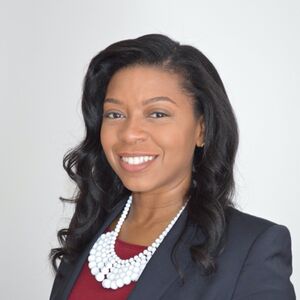Education: Difference between revisions
No edit summary |
No edit summary |
||
| (6 intermediate revisions by the same user not shown) | |||
| Line 1: | Line 1: | ||
{{Sector | {{Sector | ||
| image = Education 200.png | | image = Education 200.png | ||
| | | blueprint = Under_Development.pdf | ||
| | | leader = Derick_Lee, Shannan_Williams | ||
| Size = 200 | |||
| description = | | description = | ||
This set of {{#ask: [[Category: | This set of {{#ask: [[Category:Activity]] [[Category:{{PAGENAME}}]] |format=count}} projects is managed by the Education team. The team was formed in 2018 to serve an integrating function between and across the superclusters and to address critical challenges facing communities in the areas of education and workforce development. These challenges include determining and expanding on the roles education can play in the civic technology environment, preparing the citizens of today for the workforce needs of tomorrow, and expanding access to educational resources for all members of the community. | ||
| body = | | body = | ||
[https://gctc.opencommons.org/images/0/00/ESC_Presentation.pdf See the Education Supercluster Overview for more information.] | [https://gctc.opencommons.org/images/0/00/ESC_Presentation.pdf See the Education Supercluster Overview for more information.] | ||
| Line 11: | Line 11: | ||
<div><ul> | <div><ul> | ||
<li style="display: inline-block;"> [[File:Derick_Lee.jpg|thumb|none|200px|Derick Lee, <br />Founder and Chief Architect, <br /> Pilot City]] </li> | <li style="display: inline-block;"> [[File:Derick_Lee.jpg|thumb|none|200px|Derick Lee, <br />Founder and Chief Architect, <br /> Pilot City]] </li> | ||
<li style="display: inline-block;"> [[File:Shannan_Williams.jpg|thumb|none|200px|Shannan Williams, <br />Forensic Science Research | <li style="display: inline-block;"> [[File:Shannan_Williams.jpg|thumb|none|200px|Shannan Williams, <br />Forensic Science Research, <br />NIST]] </li> | ||
</ul></div> | </ul></div> | ||
| team = | | team = | ||
[http://innovatecincinnati.com/ Michael Beck], The City of Cincinnati, [https://www.stephaniehayden.com/ Stephanie Hayden], Meghan Manley, [https://www.linkedin.com/in/annmarcus/ Ann Marcus], [http://www.urbanleap.io/ UrbanLeap] | <!--[http://innovatecincinnati.com/ Michael Beck], The City of Cincinnati, [https://www.stephaniehayden.com/ Stephanie Hayden], Meghan Manley, [https://www.linkedin.com/in/annmarcus/ Ann Marcus], [http://www.urbanleap.io/ UrbanLeap]--> | ||
The City of Cincinnati, UrbanLeap | |||
}} | }} | ||
Latest revision as of 05:26, January 11, 2022
| Education | |
|---|---|
 Education | |
| Team Members | The City of Cincinnati UrbanLeap |
| Blueprint | Education |
This set of 21 projects is managed by the Education team. The team was formed in 2018 to serve an integrating function between and across the superclusters and to address critical challenges facing communities in the areas of education and workforce development. These challenges include determining and expanding on the roles education can play in the civic technology environment, preparing the citizens of today for the workforce needs of tomorrow, and expanding access to educational resources for all members of the community.
See the Education Supercluster Overview for more information.
Chair(s)
Activities

|
Augmented Neighborhood Watch | |
# Engage with Constituents currently part of the City of Oakland NCPCs to keep an eye and report crime to their local police Beat Officers. Present IoT Kits to the NCPCs to invest in micro-grid infrastructure kits that include mesh networks, computer vision cameras, sensors, and secure communication channels to capture live data about events happening to community homes, block by block. Install series of “Capture” hardware devices and send this data to a secure data platform per kit owner.
| ||

|
CIVIC school HUBS | |
| NSF CIVIC grant to incubate the Federal School Infrastructure Toolkit for more resilience Community services. A pilot program with be developed with the BENSON school district in Portland, and woven into the urban/rural network of the Metro regional emergency response. | ||

|
Cincinnati-Dayton Cyber Corridor | |
| A regional consortia approach to cybersecurity education and workforce readiness was formed by Southwestern Ohio Council for Higher Education (SOCHE) in cooperation with the Air Force Institute of Technology, the Dayton Development Coalition, University of Cincinnati, University of Dayton, and Wright State University. The coalition has expanded over time to other higher education, K-12 and industry partners. The consortium’s mission is to serve as a resource for education, research and workforce development in cybersecurity and information assurance. | ||

|
Connecting the Dots Technology Enhanced Aging-in-Place for Residents of Waterfront Village | |
The Objectives of this project are:
| ||

|
Constituent-led Public Data and IoT Utility for Urban Health Housing and Environmental Hazard Management | |
Objectives
| ||

|
CyberCity Education Platform | |
# Expand upon an existing NSF CICI grant at GW to extend regional access to the Michigan Cyber Range over CAAREN (100 Gbps DWDM network interconnected with Internet2) and develop enhanced real-world training environments using an advanced software defined multi-service exchange (MSX) technology.
| ||

|
DC Asset Management Lab at the University of the District of Columbia | |
| DC Government desires dramatic benefits through the use of the ISO 55000 management system for asset management and asset visualization tools and processes piloted through the U.S. Federal Government. The Lab allows a series of DC Government problems to be addressed in a 4-week workshop requiring 20 total hours that points to publicly available solution sets that can be deployed by DC or any other municipality that sends students to courses. | ||

|
Data Equity for Main Street - Bring Open Data to Communities through Public Libraries | |
| The Data Equity for Main Street Project is a Data Literacy and Civic Tech project that has aimed to engage community members in open data and empower them to participate in open data projects. By engaging in a curriculum that is meant for those who want to learn about and give feedback on open data, rather than just publish open data, participants improve their digital (data) literacy skills and be exposed to opportunities to use open data to inform community issues or answer individual questions. The project is moving into a new phase, from a in-class online model, to an online, interactive model. We seek to identify the impact of this new online, interactive model. | ||

|
Equity in Cybersecurity Training - A New Collaborative Pilot in Chicago | |
| AnitaB.org and ISACA (the Information Systems Audit and Control Association), under the support of the Connect Chicago program, aim to create an accessible cybersecurity training program that can help close the skills gap. Out team will offer training and workforce opportunities for women in underrepresented communities in Chicago. Our program will take them through skills training in a cohort environment with mentorship, role models, and career advancement available. This pilot program is supported by the Connect Chicago Innovation Program, a fund managed by the City Tech Collaborative in partnership with philanthropy, industry, and the City of Chicago. | ||

|
IoT Enabled Smart City Workshop | |
| Create tutorials, workshop and practice use cases for smart cities.
Demonstrate smart city applications as per NIST framework (work in progress). The workshop also discusses about IoT standards and protocol which would help ; community partners and city/municipality staff to get familiar with national as well as international IoT standards. Demonstrate how the vulnerability and external threats affect Cybersecurity and privacy. Build a model for the city and municipality leaders to visualize and take corrective steps. Build prototypes as per municipalities requirement and scale for other cities. Utilize NSF funded Maker’s space at Sonoma State University. The Lab is open for all cities/municipalities to build their proto types. The Lab has facilities to build product from scratch. (paper concept to proto type) | ||

|
Resilience HUB - Vibrant Hawaii | |
| A goal of the Resilience Hub initiative is to build individual capacity and community networks to be resilient and ready for anything. To get there, Vibrant Hawai'i hosted a Resilience Leadership Academy (RLA) - a monthly development program with curated content by local experts. | ||

|
Santa Clara County Office of Education CBRS Networks | |
| Santa Clara County Office of Education and Joint Venture Silicon Valley are cooperating with industry leaders to deploy CBRS broadband networks for addressing distance learning and homework gap challenges. | ||

|
Smart City Diaries TV Video Series | |
| Smart City Diaries is a documentary television and podcast series that showcases the phenomenon of digital transformation in small and large cities in the developed and developing world. Destination cities will have undertaken smart city initiatives to transform the way they manage their city operations and provide information and services to their residents. Each city has unique physical, social and cultural qualities; the series highlights individuals across cultures to understand how rapidly changing technologies impact how they live, work, play and learn.
The series will be hosted by a mother and daughter team: Deborah Acosta and Anna Acosta. Their perspectives differ as do their attitudes and levels of comfort with new technologies: one is a baby boomer, the other a millennial. One was CIO for a small California city, the other is a musician, songwriter, social justice blogger and social media expert. They are both smart and sassy, ready to explore a range of cities and the people who are impacted by smart city digital transformations. Through the eyes of these two women, each episode reveals how unique locations approach meeting the quality-of-life demands of residents, businesses and visitors through increased use of technology in an era of the Internet of Things, shifting populations and shrinking budgets and resources. | ||

|
Smart City Vision Strategic Planning and Digital Transformation Methodology | |
* The Smart City methodology helps people imagine and learn about future state scenarios for their lives, businesses, and cities. The process produces clearly defined product solutions and projects they want to create, design, and implement.
| ||

|
Smart City innovation Hubs | |
| Creating Smart City Innovation Hubs that support cities in their digital transformation by mobilizing whole local innovation ecosystems (PA, R&D, industry, Academia, Citizens, etc.). Starting from an alignment between all interested actors and promoting the use of digital technologies as a resource to be applied to many potential urban challenges. | ||

|
Smart Neighborhoods | |
| Full incorporation of digital technology into all aspects of city life – creation of Smart Cities – is fast becoming a best practice for urban reality. However, a large percentage of low-income residents in Oakland (and everywhere) remain digitally disconnected. Therefore, Digital Inclusion must be central to Smart City Initiatives because Smart Cities require residents to be digitally connected and empowered. | ||

|
Smart Work Learn Play - Participatory Smart City Innovation and Digital Inclusion in Public and Subsidized Housing | |
| Smart Work Learn Play, initiated by the Housing Authority of the City of Austin (HACA), with support from Next Century Cities, the Transit Empowerment Fund and the City of Austin’s Digital Inclusion and Transportation departments, aims to ensure that the design, deployment and use of smart cities technologies are inclusive and equitable. The program hires HACA-resident Smart City Ambassadors to work local government and corporate partners to: 1) teach HACA residents how to use digitally-enabled education, workforce and transportation tools; 2) advocate for and manage meaningful partnerships with private smart city technology providers; 3) engage in democratic processes, online and face-to-face with local and other government officials; 4) participate in design of smart city systems and tools with a wide array of actors.
This project has successfully conducted a small pilot phase with non-profit and corp partners. In this stage, we will build on that pilot to encompass a broad array of smart city issues, technologies, tools and diverse low income populations. | ||

|
South Bend Technology Resource Center- A Collaboration Platform for a Responsive Inclusive Beta City | |
| South Bend prides itself on being a Beta City – a City that embraces new technology, creative partnerships, and new approaches to improve resident experiences and service delivery. | ||

|
The Inclusive Smart City | |
| An AI-augmented skills-based jobs placement programme by the Singapore infocomm Technology Federation (SiTF) to help mature and displaced workers transition effectively into the tech sector. The programme will be a combination of AI tools and high-touch engagements to drive outcomes.
This effort is also integrated into a larger national initiative called TeSA (TechSkills Accelerator) to improve the employability of Singaporeans and to meet the demand for skilled tech workforce by different industries across the economy. TeSA involves key industry and employer associations, tech companies in different sectors of the economy, key enterprise users of technology in different industries, government agencies both economic and regulatory ones, labour unions, students and professionals. TeSA is steered through a national Governing Council and various Sector Committees representing different industries. TeSA is led by the Infocomm Media Development Authority of Singapore (IMDA), with other partner agencies. Both TeSA and talentguru AI-driven platform have been launched. New efforts are being developed and launched on an on-going basis. | ||

|
UPsouth | |
| UPsouth a technology platform that supports Auckland Council connect with young citizens and empower them to become civic entrepreneurs. The Southern Initiative (TSI) is a place-based initiative in South Auckland, New Zealand, that aims to create a prosperous, resilient area where communities thrive. To deliver on its mission, TSI wanted a way to engage with young people in South Auckland. Itsnoon’s civic empowerment platform ‘UPsouth’ enabled young people, of Māori, Pasifika and other ethnic backgrounds, aged 15-24, generate thousands of thoughts, ideas and commentary on important local issues while earning micropayments for their contributions. | ||

|
World Digital School | |
| Cities and communities around the world are entering the next era of transformational change in which citizens and their surrounding natural and built environments are increasingly connected by digital technologies. In the coming digital industrial revolution, technology will widen the playing field to include greater participation of individuals and ideas from all walks of life as we reinvent who and what we are. These technologies not only have the potential to build a more inclusive community, but when thoughtfully applied could help realize greater socio-economic gains. Conversely, if these technologies are not available to all, we would fragment our communities more than they are today.
Smart Cities are %90 sociology and %10 infrastructure. | ||

